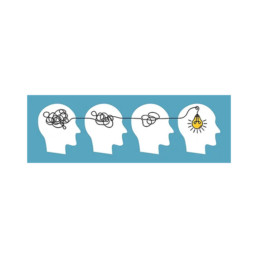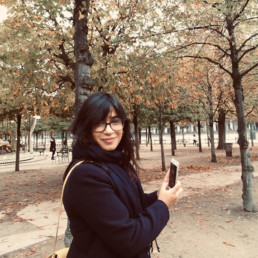“New year, new me!”

Written by Andrew McGeehan
Andrew (he/him) is a trainer/consultant based in Singapore that loves talking about anything DEIJ related and/or cats!
A phrase that all of us hear a lot every year right around this time. I know I have said it (and non-ironically!). This year, I’m asking myself (and all of you reading this) – what will actually be new? What am I planning to do differently this year? How am I planning to spend my time, energy, resources, and money? How will I commit to uplifting others, pushing for justice & equity in the world, and naming hurtful behaviour in my community?
And in the end, will the new me take the time to reflect, look inward, and identify the ways in which I also contribute to marginalisation and oppression?
Every time a new year comes, regardless of the calendar that we use to mark it, it is a time for renewal. There is that surge of energy that comes with seeing the whole next year laid out before us and the possibilities fly through our minds. We imagine who we might become, who we might meet, what new opportunities we will have, and a whole new life can flash before our eyes. But before we know it, we are back to work, back in our lives, back to the same old routines we always had, and within a month, we are left wistfully wondering where that excitement for the new year went.
I will challenge you today to not let that happen!
I challenge you to make empathetic, inclusive, and justice-oriented commitments to yourself and others and to follow through on them.
I challenge you to question yourself constantly.
I challenge you to have conversations you’ve never had before that are difficult and nuanced.
I challenge myself too.
I am a queer white cisgender able-bodied man doing diversity, inclusion, and equity work in Asia. There is a lot for me to continuously unpack about my cultural background, my perceptions of reality, my understandings of privilege and power. I am constantly learning and interrogating what it means to be a white person and a cisgender man and talking about these issues. I’m clarifying for myself where and what my role should be.
If you are interested in solidarity work, allyship, advancing racial & gender & orientation & disability & religious (& more!) equity, and seeing the world take more rapid steps towards equity and justice, I’ll invite you to make these commitments along with me.
1.Do the internal work – When we want to work towards justice and equity, our interest and passion for the topics aren’t enough. There is a lot that we need to accept about ourselves, socialisations to try and unlearn, and reflection to be had. I often work with folks who prefer to skip this step – in trainings, someone might say “Can you just tell me what we should be doing to make our organisation more inclusive?” And yes, I could do that. But without any understanding of our own internal worlds, we won’t be effective advocates for justice.
What do I mean by this? Spend time uncovering your own biases, accept that we are all brought up to believe negative stereotypes about people who are different than us, analyse your social circles, identify who you gravitate towards to at work and who you avoid and why. We don’t need to be perfect people in order to engage in justice & equity work, but we do need to be aware of what we are walking into the space with.
2. PLEASE move beyond awareness – Awareness is over. There is so much information out there via mass media, pop culture, research, memoirs, peoples’ lived experiences, surveys, etc etc etc! Awareness isn’t a bad thing; but for many people and organisations, it’s the only thing. Awareness without action doesn’t change anything. Having a work event to celebrate International Women’s Day and share information on the wage gap is fine – but it ultimately rings hollow if there isn’t follow up within the organisation to actually reduce/eliminate it within the organisation.
3. Name harm with your friends, family, & colleagues – It’s time to start doing the hard work and talking about these issues with the people closest to us (or at least those we spend a lot of time with). Especially for those of us with a lot of privilege, it’s necessary to name the racism, heterosexism, ableism, sexism and other harms that we see within our families and friends. Naming it and discussing it doesn’t have to be a big conflict, nor does it mean that the person called out is a bad person. We all do things that are hurtful at times, and if we aren’t held accountable for it, we won’t be able to understand and change our behaviour.
It might be easy to start with something simple, like saying “I don’t think comments like that about gay men are appropriate” or “I don’t think jokes about immigrants are funny.” If feeling generous, we may take more time to explain how the actions might harm us or make us feel or provide more resources for them to do their own learning.
4. Commit to making lasting change – Systemic -isms persist because the systems haven’t changed yet. There is tons of value in changing our internal worlds and educating our friends and family. It’s also extremely powerful to work to change systems. In many cases, our capacity to change a system will be in the workplace. We can advocate for policy changes, required trainings, targets for inclusive leadership. These changes can be difficult to make and sometimes run the risk of seeming “boring”, but they create change that lasts beyond our tenure in any organisation. For instance, an organisation celebrating Trans Day of Remembrance and encouraging staff to share their pronouns is great, but does that same organisation have trans-inclusive and affirming healthcare?
If you are part of an Employee Resource Group/Network Group, this is a great space to start considering what institutional changes need to happen in order to create an environment of affirmation and comfort for all. An easy way to start is by reviewing company policies – is the language gender-inclusive? What is the parental leave policy? Are there flexible arrangements? How are neurodiverse staff supported? Does insurance cover mental health?
5. Read & learn about it from those who know (and believe in their knowledge of their own experiences) – There are many amazing activist writers, artists, musicians, and filmmakers out there. Learn about them, learn from them, and buy their products! If you are a majority race person and you don’t know about racism in your country/region, there is surely a book about it written by someone who experiences that racism daily- read it with an open mind. If you want to understand better the experience of a person who lives with a disability, find research that talks about the workplace challenges folks face.
And when you read, listen, and watch about these experiences, believe them. Folks with marginalised identities know what they have experienced. Sometimes we want to dismiss what we hear because it makes us uncomfortable or because we know that we have participated in similar hurtful behaviours. Lean into that discomfort and try to identify where it is coming from without being defensive. I know this is hard and I still struggle with this sometimes, but it is so necessary. Just pause and ask yourself “what about this is making me feel this way?”
Some Singapore-based starting points:
- “What We Inherit: Growing Up Indian” – True stories of Indian women’s experiences in Singapore
- “Queer Singapore: Illiberal Citizenship & Mediate Cultures” – Highlights the complexity of queer existence in Singapore
- https://transformativejusticecollective.org/ — Learn more about the work being done to shift justice away from the death penalty and towards transformation
6. Expand your social circles – So much of my own social justice learning has been through relationships I’ve built with people. I was very lucky to go to graduate school with an extremely diverse cohort and build wonderful relationships across race, gender, religion, and more. Our familiarity with issues brings us greater empathy, and many people care more about issues that affect someone they know. Inclusive access in a city may have never mattered to someone, until their partner becomes wheelchair bound and then they will notice all the ways in which cities are not built for folks with physical disabilities or mobility challenges.
As a word of caution, I do not advocate expanding your social circle in a way that is tokenistic (i.e., I should find a gay friend! I don’t have one of those!). But think about ways that you can expand who you interact with, through social media, connections from other friends, or volunteering. Take a look at who you already know- what is the makeup of the people you spend time with? During my trainings, I always ask people to consider who they go to lunch with at work and who they see other people go to lunch with. My personal experience in Singapore is that many foreigners take lunch together and many locals take lunch together. Could there be unconscious bias at play? Could people be more comfortable sticking only with what is familiar? I don’t have an answer, but it is worth investigating what this looks like for us individually and see what patterns we observe.
7. Try, fail, apologise, and try again – Whenever we engage in work related to justice and equity, we will invariably make mistakes. When someone tells you that you have hurt them, or done something that is racist/sexist/homophobic/etc, apologise for causing harm. If possible, have a conversation to make sure that you understand what it is that was hurtful (but don’t force the other person to share this with you). Think about how you can do better next time and maybe reflect on the experience with a trusted friend.
Maybe you want to become more comfortable naming microaggressions at work – you won’t do it right all the time. But you will be able to refine your technique and enhance your comfort level as you practice. As with any skill, we need to practice it to get better at it. Working towards justice and equity are no different. Do your best and approach this work with a lack of ego and the knowledge that you will make mistakes and that is ok.
8. Understand what you have to gain – Greater justice, equity, and inclusion in the world benefits everyone. People with privilege often feel like they are “losing” something, but that is not the case. There is enough equality to go around. Understand that advocating for gender equity creates new opportunities for people of all genders, including men. We are not diminished when others have the same opportunities that we do; but we are diminished when others are held down by systemic oppression.
Along with this, we have to know and understand our own “why.” Why are you doing this work? Why do you care? I often see organisations and individuals who are doing D&I work because it is seen as trendy or required in the contemporary era. This is a surface level connection to the work that won’t go beyond some token improvements or remain mired in awareness-building. Think for yourself about what your personal commitment is and act from there.
I am pledging myself to the above as well. I am continuously interrogating my place as a White American man in Asia talking about diversity, inclusion, equity and justice. I reflect on how privileged I am to be able to be hired by companies to do this work. I mess up in my trainings and apologise to participants when I’ve cause harm. I work to continue finding research and pedagogies that do not have a US-centric lens and are context-specific to Asia & Singapore. I can and will continue to refine and nuance my approach towards this necessary work.
It’s a journey that we are all on. I hope that you will come along with me in 2023 and consider which of the above items might be part of the “new you.”
The issue with “high expectations”

Written by IncludEd Diagnostics
IncludED Diagnostics support local authorities, academy trusts, and individual schools with their work to increase inclusion, reduce suspensions and reduce exclusions. More information is available at www.includeddiagnostics.co.uk
If you are sanctioned for failing to meet an “expectation”, it is, in fact, a “condition”.
For a long time I have been interested in why deprivation and poverty are associated not just with academic outcomes, but with behavioural outcomes, and on my journey to understand this I came across a researcher called Sendhil Mullainathan and his work on the concept of scarcity. In his view, scarcity is a much more wide-ranging concept than poverty (an arbitrary threshold of income), i.e. we can have a scarcity of time, health, family support, relationships, cultural input, etc. – all of which can impact our outcomes. In describing the impact of scarcity he uses the analogy of packing into a smaller suitcase, and inspired by the #IncludEd2023 conference today, I’d like to start with this.
Two pupils are going away for a week, one packing into a large suitcase and one into a smaller suitcase. The suitcases can be seen as strict metaphors for disposable income (family income in this example), or in a broader way as availability of lots of different resources… but they both articulate a difference in experience.
The pupil with a smaller suitcase (i.e. scarcer resources) has a smaller capacity for items, therefore…
- They are forced to operate with more conditions
Their items have to be folded smaller and packed away better than the pupil with a large suitcase. They have to make more “either/or” decisions on what to pack, whereas the pupil with the larger suitcase can pack more with less efficiency.
Could you list all the conditions / expectations children must meet to engage fully in your school? When we put pressure on parents/carers to immediately provide a new pair of school shoes, do we consider the scarcity that so many are living with? Less time because of childcare or multiple jobs, the cost and time of travel to get the shoes, the cost of the shoes, and what is the “or”? What isn’t being bought, what isn’t time being invested into?
- Decisions have to be better!
Not only does the pupil packing into the smaller suitcase have to make better, not equal but better, decisions because there are more conditions, but any errors they make will cost more. If both forget their phone chargers, one may buy a new charger with relative ease, one may not. If packing is done badly and an item gets damaged, the same applies.
Living in scarcity means a “lack of slack” for mistakes – we all make mistakes but they don’t cost us or impact us all equally. There is very little flexibility for this within most school behaviour systems as the consequences appear superficially the same – the same detention time is given. The actual impact – socially, emotionally, educationally – may vary widely.
- Triggering reminders of scarcity means we have less “bandwidth” for the process [not our inherent intelligence / cognitive capacity but how much of it is temporarily available]
There is research to support this – using food-related words in word-searches prompted dieters to be significantly slower in finding the following words – and the implications are profound. The implications are that the concentration, focus, and attention needed to actually pack the suitcase is more limited for those affected by scarcity when that has been consciously triggered (i.e. I wish I had a bigger suitcase like other people!) Wouldn’t that make this pupil more likely to make mistakes? Ones which cost more?
——————————————————
What prompted me to write about this today was hearing from two speakers who have experienced the care system. Consider the conditions we place on children in school, then consider the size of the suitcase a child in care is packing, i.e. the multiple levels of scarcity they may be experiencing. We have conditions on appearance and equipment – coat, black socks, bag, colour of pen, PE kit, pencil-case, etc. We have conditions on behaviour – a consistent requirement to accept adult authority and direction, regulate level of activity, attention, and emotional response. Even peers come with conditions for integration – they could be clothing, games consoles, cultural references, a similar capacity to spend time together outside of school. Some of these may feel impossible for a young person to achieve… Lemn Sissay OBE described it so viscerally today when he recalled “the smell of people with families”.
The speaker before Lemn was Jade Barnett, which is a name you will come across again in the future. Her educational journey travelled via two managed moves, a pupil referral unit, a move into care then a move into a care home at the opposite end of the country. Jade is a model of the most positive outcomes – today she held five hundred minds in her hand purely because she speaks with such intelligence, articulacy and power. But, as a child, she was forced into a situation where she was packing into a small suitcase. And the schooling system places yet more conditions on her, and others like her. Nowhere in her speech did she imply that those conditions were helpful; where many, such as Lemn, feel like they don’t belong already, the consequences of failure to meet these “expectations”/conditions must only reinforce that perception. At their least useful, they make engagement and access to education harder for some of the most vulnerable.
————————————————–
To return to more typical language of schooling, high expectations can no longer be a cover for just describing a very large number of conditions. And we need to stop painting such conditions as supportive to young people by their mere presence. That is to confuse equality of expectations/conditions with equity, but that isn’t equity at all. In reality, we may be both ignoring the smaller suitcase and expecting more of the child who is packing it.
High expectations of academic progress are crucial to all children fulfilling their potential, and these are genuinely “expectations” because they come without sanction. Without them children may not be taught to their full potential. Alongside that, adult understanding of the difficulties that some children face is a critical factor in making sure children belong and can thrive. For school and education leaders, it is worth considering what is within your control and sphere of influence to mitigate the impact of scarcity. Is the pupil premium grant being used to best effect? Also, please do consider when thinking about the rewards and sanctions in your school how do you make things fair for those living with scarcity?
Why I pretended my dyslexia wasn’t a big deal - my experiences as a dyslexic teacher.

Written by Catrina Lowri
Catrina Lowri is the founder of Neuroteachers and a neurodivergent teacher, trainer, and coach. As well as having 22 years’ experience of working in education, she also speaks as a dyslexic and bipolar woman, who had her own unique journey through the education system.
When I had already been teaching for about 10 years, I met a pair of grandparents at a friend’s barbecue. They had just received some devastating news; their 9-year-old grandson had been diagnosed with dyslexia.
They told me this in hushed voices, as if they were ashamed.
Although, their reaction was not unusual (97% of respondents in one survey viewed dyslexia negatively *), I was taken aback. Did this mean I should be ashamed or devastated about my own neurodivergence?
I did my best to reassure the couple that their grandson would be fine. I told them lots of successful people, like Richard Branson and Tom Cruise are dyslexic. Although he might need extra support, their grandson could get GCSEs and A levels if he wanted. They seemed reassured. Then I told them I was a dyslexic teacher.
Their reaction astounded me even more than the shamed hush had done previously. They were over the moon at my success! The grandfather toasted my talents, and the grandmother gave me a hug. They both treated me like I had just climbed Mount Everest. I couldn’t fathom why.
Until that point, I had never considered my achievements anything special. Yes, I’m a dyslexic teacher who went on to gain a master’s degree but was that out of the ordinary? I knew no other dyslexic teachers, but they must exist. I’ve always disliked it when people say I’ve ‘overcome’ my dyslexia. I haven’t. I’m still as dyslexic as I was the day I was born ( it’s genetic). I’ve just found ways around it. Most of which involve the use of technology.
I used to downplay my attainment in a matter-of-fact fashion. I disliked people who made ‘ a big deal’ of their dyslexia. My dyslexic friend, and I used to joke that we would write a book called ‘So you’re dyslexic? Just live with it!” As if all you had to do was keep calm and carry on.
I have talked before about my experiences at teacher training, where another student commented that he believed dyslexia was a middle class camouflage of a lack of intelligence. That must have stuck because, up until my chance meeting with these grandparents, I had just shrugged off my neurodiversity (ND) and downplayed my success.
After meeting my fellow barbeque guests, however, I changed my attitude. No, it hasn’t been easy to forge my career, firstly as a schoolteacher and now as a private specialist teacher and trainer. Yes, I do find several aspects of the job harder because of my ND. And yes, I am proud of my achievements.
I’m now 23rd years into my career, I’ve met hundreds of colleagues, yet I know very few ND teachers and even fewer dyslexic ones. My next step is to try and find us all support and recognition so that we can be good role models to ND children. And perhaps inspire the next generation of ND educators.
Reference Dr Kate Griggs ‘ The Creative Brilliance of Dyslexia’ https://www.ted.com/talks/kate_griggs_the_creative_brilliance_of_dyslexia
Building trust: working with Gypsy, Roma & Traveller students

Written by Christian Johnson
Christian works as a tutor with GRT (Gypsy, Roma and Traveller) students for Open Doors Education and Training, and is also a Policy and Campaigns Officer for The Traveller Movement.
I’m a tutor working for Open Doors Education and Training (ODET), a community interest company and educational provider offering funded and tailored education to Gypsy, Roma and Traveller children and young people. Having worked for ODET for over two years, one of the things we often hear from schools and other referral bodies, be that local authorities or youth service providers, is that they don’t know how to engage with different communities from Gypsy, Roma and Traveller backgrounds.
This is something which is unfortunately reflected in the data. When it comes to education, GRT (Gypsy, Roma, Traveller) communities have the lowest attainment rates of any ethnic group in the UK as well as some of the highest fixed term exclusion rates (21.26% for Gypsy/Roma in 2018-19 and 14.63% for Irish Travellers vs. 5.36% of all pupils) from UK schools. These figures are compounded by the well-known correlation between low educational attainment and exposure to the criminal justice system, often referred to as the ‘School to Prison Pipeline’, which extends to the GRT population. Almost 10% of children in the youth estate identified as GRT, which is extremely concerning when we consider GRT only constitute between 0.5 – 1% of the UK population.
In trying to address these widening disparities, we recently released an evaluation of one of educational programs, ‘Tutors for Young GRT’, in partnership with Leeds Beckett University titled ‘Building Trust, Stepping Together’. Through stories, poems and songs, researchers captured the voices and thoughts of a large cohort of GRT students studying with Open Doors Education across the country, distilling their findings into cogent and concise reflections on what works and what doesn’t. These conclusions represent fertile ground for other teachers and those working within education to develop their own approaches to engaging with young GRT.
Tutors for Young Gypsy, Roma and Travellers
In the wake of the pandemic and in response to the data available, ODET’s ‘Tutors for Young GRT’ program was created to provide the support needed to reduce the attainment gap between young Gypsy, Roma and Traveller students and their peers. Each student receives an hour a week of one-to-one lessons from their tutor over the course of a school year, focused on topics best suited to their needs and delivered remotely via Zoom. In designing the program, ODET was keen to ensure that digital access didn’t become a barrier to education – as it was for many students during the pandemic. With this in mind, the digital needs for each student are assessed upon joining the program and, if required, are provided with a suitable device to attend their lessons free of charge.
The tutoring itself is, paradoxically, both generalised but also tailored; encompassing all ages (provided they’re in full time education) and across all subjects. This broader scope gives us as tutors a greater flexibility to tailor our lessons to the needs and interests of the child. While we place an onus on core subjects, if a child is a particularly talented artist then we’ll try to help them cultivate their ability by assigning them a relevantly experienced tutor. The same goes for other subjects; it’s primarily about nurturing a passion for learning among the students and giving them the support they need to succeed, regardless of the subject.
Building Trust, Stepping Together
Compiling the voices and experiences of 135 students, alongside reports published by the tutors at the end of each lesson, the evaluation found the program to be successful in helping to address the educational inequalities faced by the Gypsy, Roma and Traveller young children and young people. These findings were broken down into several sections, each tackling a component of what helped the program’s delivery, and summarising the voices of the students.
Valuing learning despite school – There was an overwhelming sense from the students that learning was important. Many students recognised the importance of the core subjects but also expressed interests in the humanities, arts and music. The report found that despite a desire to learn, many Gypsy, Roma and Traveller young people leave school due to poor experiences in education, often stemming from issues such as bullying, instances of discrimination and racism, bureaucracy and digital exclusion. One student commented that ‘I prefer this (online tutoring through ODET) to learning in class because sometimes it can get a little tricky in class with other people, who can sometimes make it hard to concentrate’. This willingness to learn was reflected in the attendance figures from the program, which, on average hovered at a consistent 70%.
Quality Tutors – The report found that the one-to-one structure of the program was positively received. Consistent across the experiences shared by students, were mentions of the importance of tutors having confidence in their pupils’ ability and building productive and supportive relationships. Another point of emphasis was that students didn’t feel judged or pressured during their learning. One student mentioned that they liked that the tutors are not too “pushy”. I think it helps me learn faster because they never put pressure on us so we are able to focus more.
ODET’s tuition – Research has shown us that GRT communities are more likely to have poor experiences within the education system. Another key takeaway of the report was that the program helped students build confidence with learning, which then carried into mainstream learning. One student reported that ‘school has been so much easier since tutoring with [tutor’s name]. School feels like so much better and all the support I’ve been getting… I really hope our lessons can continue’. This was reflected in data aggregated from the tutors’ reports, which found that roughly 90% of students displayed a commitment level ‘at or above the expected level’.
My experiences working with Gypsy, Roma and Traveller Young People
The term ‘GRT’ itself is a broad umbrella, encompassing three varied groups (Gypsy, Roma and Traveller); each with their own distinct identities, variations and regional specificities. While there might be one broad term, the experiences of each student I’ve taught on the program have been resoundingly diverse. I’ve taught students who’ve left mainstream education in year 8 to be home-educated with their siblings, others who raise horses in their spare time; one young man who competes nationally for his age group in golf, and another who was awarded ‘student of the year’ in their school – the list goes on. In my experience, young people from Gypsy, Roma and Traveller backgrounds are, more often than not, high attainers, just not always in the context of mainstream education.
In a way, it’s a refreshing process to go through as an educator, for each lesson prompts you to reconsider and adjust your approach in order to better meet the needs of the child. Whether that’s through brushing up on your knowledge of golf terminology to teach spelling, or helping a student learn maths by designing a treehouse with them. This is where the format of the program, being one-to-one, really shines. It allows us as tutors, to tailor the lessons to the individual needs and experiences of the student, going at their pace while using material they’re passionate about. I realise it is a genuine rarity within the education sector, to have the scope and the time available to deliver lessons in this way, but it’s greatly needed for young GRT. In order to help address the widening attainment gap and allow these young people to go into the world confident and qualified to pursue a future they want rather than feeling like they’re on the back foot, programs such as these are absolutely essential.
One thing which is consistent across the students who’ve been on the program for a few weeks or more, is an amazing tenacity and genuine passion for learning. These students want to learn. Many just don’t necessarily see learning as synonymous with formal education. Several students have expressed this to me, that academic learning isn’t for them, that it’s for someone else.
This morning I received an email from a teacher in south London looking for poetry recommendations by Gypsy, Roma and Traveller authors she could teach to her year 7 class. I’m certainly no authority on GRT poetry, but it’s great to see educators recognising the importance of including positive Gypsy, Roma and Traveller representation in their curriculum. Including material from Gypsy, Roma and Travellers isn’t something teachers should ignore, but which they can find out about and incorporate. Because having texts, or paintings, or songs for that matter, from GRT artists, shows Gypsy, Roma and Traveller young people that education is for them, that it’s a path or stepping stone they can take to help them build the life they want.
Two of the key words which kept coming up in feedback for Leeds Beckett’s evaluation were patience and support. Many of the students reported feeling intimidated by school, that it was scary, lonely, and competitive. With many students, I noticed a dramatic shift in their attitude to learning after just a few weeks and I think this has a lot to do with just feeling comfortable. Having a historically difficult relationship with the UK’s education system, it’s important that teachers are patient, understanding and sympathetic of the structural barriers faced by many of Gypsy, Roma and Traveller young people and their families before them.
In talking about the report and my experiences as a tutor on the program, I hope to show others working with these young people that they want to learn, want to engage, and will do great things if given the opportunity.
For further information and guidance on techniques to engage with the GRT communities, I’d certainly recommend our recently released toolkit of best practice, titled BESTIE. Released in partnership with the National Youth Association, the toolkit provides a wealth of helpful guidance for practitioners working with young GRT in different contexts. You can find the toolkit here.
Two Years On: Where are we now?

Written by Hana Malik
Hana Malik is currently an Associate Senior Leader, Head of English with a passion for social justice, diversity and equity.
We decided, after the murder of George Floyd in the US, that we wanted our educational organisation to join the movement against racism and we turned our school towards the necessary work it took to be anti-racist. Now, two years on, I find myself asking where we are and what we’ve achieved, if we’ve made any positive changes to the lives of our staff and students and if our DEI work has moved us forward.
We have heard it before, and it is key to achieving success: DEI work is circular – it is evolving and the work is never ‘done’. It is vital therefore to reflect on progress and ensure the evolutions keep happening.
Ella Washington, an organisational psychologist and founder and CEO of Elevate Solutions (a DEI strategy firm), helps to clarify the ‘five stages of DEI maturity’ and how we might evaluate the work we are doing. The five stages are: aware, compliant, tactical, integrated and sustainable. She explains this in her upcoming book as well as for the Harvard Business Review: https://hbr.org/2022/11/the-five-stages-of-dei-maturity She has also spoken about the three Ps of DEI evaluation.
Purpose
The most important place to begin is with the why, especially because there is (not yet anyway) no standard of DEI in an educational setting against which you can measure your organisation. No teacher standards (although meeting the needs of learners is often cited as DEI adjacent) and certainly no Ofsted criteria under Quality of Education or Personal Development. I consider our school and think about where we were in 2020. Why did we join the movement? Did everyone know where we were going and why we were going there? Did everyone feel safe in joining the journey?
There were great successes in this area, especially in 2020 and 2021. Now however I must admit that our commitment to DEI has become something of an ‘extra’ improvement priority. Not because we don’t believe in DEI, but because, like all schools, the reality of exams, Ofsted, sky-high bills, mean that we are juggling countless balls and it has been hard to hold on firmly to the DEI one. Most important perhaps is the question of whether our why has changed and if as leaders we can be courageous enough to acknowledge that and realign the vision.
Pitfalls
This can be difficult, but honest reflections and consideration of barriers and pitfalls will contribute to successful and sustained DEI work. Were leaders vulnerable and open about why we’d started this journey thereafter building confidence and trust in the staff body? Did staff have a secure and shared language about DEI? Were changes manageable and sustained?
We’ve fallen into some predictable pitfalls. The one that is arguably most challenging is that we have stopped communicating our vision and goals for DEI. Is it still on our school improvement plan? Yes. Do we all know why it’s there and what change might entail? No. Secondly, the work of DEI cannot fall to one person. A DEI champion is great, but what happens when they leave? We know how important middle leaders are in delivering change, and it is in that room we can ensure that DEI is sustained.
Progress
The all-important ‘this is progress’ stage. The curriculum, the outcomes, the senior leadership team. We want to see progress across all elements of our organisation. So, what does progress look like? What does it look like in the short term and the long term? How can we find out where we are now and where we need to go next?
We do have a more diverse and representative SLT. We do have a more inclusive recruitment process from blind CVs to diverse panels. Our students do learn about a wide range of topics; from kabaddi in PE to reframing migration. There are boxes we can tick now, that is true. But we know our work is far from ‘done’. We will need to return to the question of what progress looks like for us and go from there. If schools are microcosms of the society we live in, we need to think carefully about what DEI in a socially just and equitable world looks like. We can then build the change we want to see.
Tidying up: a lesson in values from the Japanese football fans

Written by Esther Cummins
Course Leader MA Education (online) at Falmouth University
Every four years, the World Cup offers schools a theme around which to focus their learning. The links to geography and sport are obvious, but further learning opportunities include the application of probability, time zones, languages, and textiles. Unexpectedly, this year we have all been shown an example of community values from the Japanese fans and players.
The pictures and videos that have circulated of spotless dressing rooms and tidy stadiums show the communal value of respecting your hosts held by the Japanese visitors. This representation of fans and players is a far cry from the embarrassing behaviour that is often seen in media reports about English fans. So why is there such a difference in the behaviour?
Interviews with Japanese fans have commonly cited the term, “atarimae”; the English translation is similar to ‘obvious’ or reasonable. From a young age, children take on the responsibility of cleaning their schools before they leave for the day. This task is not an ‘add-on’ to be squeezed into the curriculum if there is time. It is not a quick tidy-up or asking the students to put their chairs on the table. Without this cleaning, the school would be dirty.
I have cleaned schools out of necessity; in a small school where I was a senior leader, the headteacher and I were the contingency plan when the cleaner was absent. I have asked children to wash some toys at the end of a school term. I have asked university students to put their rubbish in the bin. But I have not worked in an environment where it was a regular expectation for the educators or the students to maintain the tidiness and cleanliness of the learning environment.
Within our society, we pay cleaners and caretakers less than we pay our educators. Perhaps this mentality is a hangover from the British Empire, where the wealthy expected their servants to clean up after them. Our values impact our behaviour (Steg et al., 2014), thus it is important to consider what and who we value. When we litter or leave a mess, we are saying we are more important than the environment or those that are paid to clean. Is this who we want to be as educators, and as a nation?
Respect is part of who we are; indeed, “The teaching of respect for others is not only one of education’s more important objectives, but in its absence little, if any, real learning can take place” (Ungoed-Thomas, 1996, p152). If we are viewing our pupils as the citizens of the future, we need to think carefully about the values we are instilling in their lives. Saying we are respectful is different to being respectful; we need to model and insist upon behaviour that mirrors this value.
This issue is about more than tidying up. It can be applied to any of our inclusive values, our desire for equality, and our drive for fairness. If atarimae means stating the obvious, which behaviours and values do we need to instil in our classrooms, from nursery to university, that creates a respectful community we are proud of?
We are yet to see who takes home the trophy, but I know whom I see as the winners of this year’s tournament.
When Does Identity Matter?

Written by Mahlon Evans-Sinclair
Mahlon Evans-Sinclair is an experienced educator with extensive participation in the fields of learning, professional & personal development, and EDI (Equity, Diversity and Inclusion).
A good rule of thumb is being able to articulate its relevance to yourself.
I often read many stories/recollections that involve identity markers as a descriptor.
I’ve reasoned with the many manifestations of how people use them and figure that whatever the expression, the main reason is to draw attention to something that seemingly has relevance to the story… but does it always…
A former colleague would often tell stories and when an identity descriptor would come up, they would often pause and say ‘and (e.g. race) is relevant to the story here because’… At first it would take me out of the story as I would wonder what the point of drawing attention to it was for, but the more I heard it being said, the more I felt comfortable and more understanding of its intention – It was a signifier for both the storyteller and the audience that the inclusion of this marker was intentional and why.
In thinking about how we use markers in education, sometimes we implicitly state things and expect that others instinctively know what we mean, or we (un)intentionally ‘add weight’ to the meaning of our stories by throwing in unexplained identity markers as though they are adjectives.
Consider for example that one of the students in a class has a learning difference that needs to be taken into account. It makes sense to say, ‘and this status matters here because (it will help with your planning/seating arrangements/conversations with them and their family)’. Consider that the same student happens to be the only non-white student in the class. Would stating that there’s a ‘Black kid with dyslexia’ in the class be helpful in the same way?
It’d be useful to think about what you’re actually intending to state.
– Is the race as important as the learning difference?
– Do the race and the learning difference compound?
– Are there no other ways of describing the student?
You could say that this would be simply solved by knowing and using the student’s name – yes(!) – however, we don’t always do this, especially when retelling a story to an audience who may not have the same level of connection to the subject matter.
So, consider when telling a story that involves an identity marker (such as race, gender, age, sexual orientation, physical or mental difference, etc), add in a clarifier of ‘their identity matters here because…’ and see if it actually does.
Diverse Educators: A Manifesto - Book Review

Written by Madeleine Spink
Madeleine completed a PGCE in Citizenship at the IOE after studying at the University of York and Goldsmiths. Madeleine now teaches Sociology, PSHCE, Oracy and History at Langley Park School for Girls in Bromley.
Diverse Educators: A Manifesto is edited by Hannah Wilson and Bennie Kara, with contributions from over 100 educators, structured around the Equality Act 2010.
It starts with a quote from Maya Angelou that “diversity makes for a rich tapestry, and we must understand that all the threads of the tapestry are equal in value no matter what their color.” The books format is best described as a tapestry. It is made up of ten chapters, one for each of the nine Protected Characteristics (Age; Disability; Gender Reassignment; Pregnancy and Maternity; Marriage and Civil Partnership; Race; Religion and Belief; Sex; Sexual Orientation) with a tenth chapter exploring intersectionality.
The book is collaboratively produced and mixes personal and professional experiences. Educators generously sharing their experiences and learning include primary and secondary teachers from all age groups, backgrounds and life experiences. The book develops the readers empathy to the diversity of educators, as well as the diversity of opinion of people within each protected characteristic. For example, the chapter on disability includes personal experience, the need for disability in RSE, practical tips to involve students in curriculum planning and data on the permanent exclusion rates for disabled students. It feature’s ACT’s own Lee Jerome on Intersectional Citizenship as a status, a feeling and a process. The chapter on Transgender inclusion is also insightful and talks about Lucy Meadows, whose death should not be forgotten by teachers who have followed her into the profession.
Deep questions are asked throughout, and the contributions informed my thinking about whose responsibility inclusion is, whose work it often ends up being and whether inclusion work is for the long term or ‘en vogue’. I would have loved to have seen a chapter talking about working class teachers existing in the middle class school environment, and how this identity intersects with the protected characteristics.
The variety of editing and writing styles did make the manifesto lack cohesion and feel inaccessible at times. The structure takes time to get used to, and can be navigated either by starting with the editors overview and selecting the sections that appeal to a particular interest, or by focussing on the key takeaways and ‘contributions’ to the manifesto at the end of each chapter. This changes depending on how the chapter has been edited, and some chapters are referenced while others lack referencing. It is a tapestry of a book, to capture such a variety of perspectives is a huge achievement, but not everything will appeal to everyone.
Diverse Educators is a book to dip in to, reference and use as a guide to practical steps that can be taken to inclusion. It would be a good choice for a staff book group and comes with a reading guide and questions. There’s a lot of ways this resource can be used and shape teaching, learning and the school environment.

